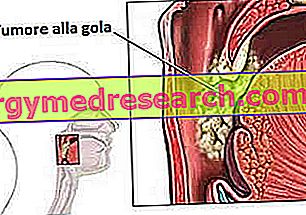Related articles: Cholangiocarcinoma
Definition
Cholangiocarcinoma is a malignant bile duct tumor.
The disease derives from the transformation in the neoplastic sense of the cholangiocytes, the cells that make up the epithelium of the intra- and extrahepatic bile ducts.
Many cases of cholangiocarcinoma are sporadic. Conditions that may predispose their development include sclerosing cholangitis, infestations with liver flukes and the presence of cytokine cysts (which can cause chronic biliary inflammation).
Other known risk factors are liver cirrhosis (both infectious and toxic) and intrahepatic calculosis (or hepatolithiasis).
Most patients with cholangiocarcinoma are typically between 50 and 70 years old.
Depending on the anatomical location, the cholangiocarcinoma can be distinguished into:
- Intrahepatic (or peripheral) : originates from the bile ducts within the liver;
- Extrahepatic : occurs in the biliary tract outside the liver; in turn, it is subdivided into hilar (begins at the level of the confluence of the right or left bile ducts) and distal (affects the terminal portion of the biliary tree).
Most common symptoms and signs *
- Anorexia
- Asthenia
- Cachexia
- Bad digestion
- Colaluria
- Biliary colic
- Yellow Diarrhea
- Abdominal pain
- Pain in the upper part of the abdomen
- Hepatitis
- Hepatomegaly
- I made clear
- Jaundice
- Abdominal mass
- Weight loss
- itch
- Drowsiness
- steatorrhea
- Dark urine
Further indications
Usually, clinical signs occur when cholangiocarcinoma reaches an advanced stage.
- The hilar and distal tumors often present with obstructive symptoms (including itching, jaundice with yellowish mucosal and skin discoloration, light stools and dark urine), vague abdominal pain, malaise and / or progressive weakness.
- The intrahepatic cholangiocarcinoma can instead present itself in the form of abdominal mass or with late and non-specific symptoms (decrease in appetite, weight loss, abdominal pain and malaise); in most cases, it is not associated with jaundice.
The pain evoked by cholangiocarcinoma can be constant and progressive or, in the presence of an obstruction, similar to a biliary colic.
Other symptoms include hepatomegaly and distension of the gallbladder. Death is often due to sepsis of the biliary tract and liver failure.
To make the diagnosis, ultrasound (or echoendoscopic) imaging, computerized tomography or cholangiopancreatography with magnetic resonance and histological examination of the lesion are required. These investigations are used for the staging of cholangiocarcinoma and allow us to evaluate, in particular, biliary anatomy, intrahepatic metastases and tumor extension.
Surgical resection is the only possible curative treatment, however the recurrence of the disease is frequent. Chemotherapy and radiotherapy are used to reduce the tumor mass, therefore the invasiveness of the intervention. Patients with intrahepatic metastases may eventually be candidates for locoregional treatments. In the event of obstruction, the placement of metal stents or a surgical bypass allow for biliary drainage and can help alleviate symptoms associated with cholestasis.



